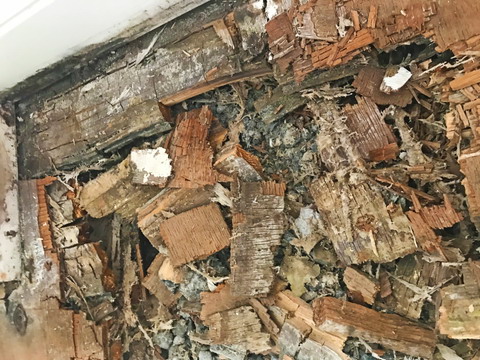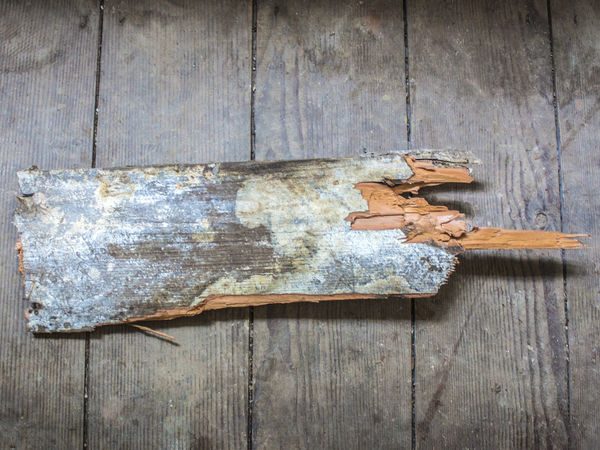Dry Rot treatment Wirral

WHAT ARE THE SIGNS OF DRY ROT?
Dry rot in Wirral is a serious maintenance issue that can cause significant and widespread damage to any property if left untreated. It’s important to be able to recognise the key signs of dry rot to prevent further damage and maintain the structural integrity of your building.
But, remember that these signs may not always indicate dry rot, and that a professional inspection is the only way to know for certain if dry rot has affected your building.
Some key signs of dry rot are:
• Discoloured and darkened timber, including skirting boards, architraves, or floorboards
• Cracks and cuboidal fractures in the timber, often accompanied by a deepening of the splits over time
• Wood that feels dry and crumbly to the touch
• The presence of a distinctive mushroom-like smell
• The appearance of a white or grey cotton wool-like growth on the surface of the timber
• The development of deep, wide cracks in the timber, often accompanied by a shrinking and cracking of the surrounding plasterwork
• A distinctive orange or rust-coloured dust, caused by the spores of the dry rot fungus
• A hollow sound when tapping the timber, indicating that it has lost its structural integrity
• The presence of ‘fruiting bodies’, which are usually brick-red in colour and shaped like pancakes, often found growing on the surface of the timber or in damp, dark places nearby.
WHAT CAUSES DRY ROT in Wirral?
Dry rot growth begins in timber which has become damp and remained damp for long enough to support the growth of the fungus. When undergoing dry rot treatment, the source of the damp which has affected the timber must first be identified and resolved.
Some common causes of dry rot include:
Water leaks
Leaks from roofs, gutters, or plumbing can cause water to penetrate the structure of a building and come into contact with timber.
Poor ventilation
Poor ventilation can cause moisture to become trapped in enclosed spaces, leading to dampness and creating a favourable environment for dry rot to grow and thrive.
Condensation
Condensation occurs when warm, moist air comes into contact with cold surfaces and creates water droplets. This can happen in poorly ventilated spaces such as basements or cellars.
Bridged damp proof course
A bridged damp proof course can cause moisture to travel up the walls of a building, leading to dampness and creating ideal conditions for dry rot to grow.

How does dry rot spread?
Dry rot is a living, growing fungus with four distinct phases to its lifecycle:
1. Spore: the orange/red/rusty-coloured ‘seeds’ of the fungus that are harmless unless they come into contact with moisture and timber to create ideal conditions for growth
2. Hyphae: the stage when whitish/greyish strands sprout from the spore and allow the fungus to begin feeding on your wood
3. Mycelium: a grouping of spores with many hyphae
4. Sporophore: the mushroom-like stage which creates more spores, starting the cycle again.
Dry Rot Treatments in Wirral
Before any dry rot treatment can take place, the cause of the excess moisture needs to be discovered and addressed, as there is little point in treating the symptoms if the cause is still present! Any repairs need to be made before dry rot treatment takes place.
Secondly, you need to know whether this is dry rot or wet rot. As mentioned above, dry rot extends much further into the home as it requires a lower moisture content for the fungal growth to survive.
There are various types of treatment for dry rot, some of which you can possibly tackle by yourself. Cleaning the infected area is essential, removing the mycelium growth, fruiting bodies and spores using a fungicide.
The problem is that it can be hard to locate all the decayed timbers as they are hidden beneath walls in the structure of the building. A professional dry rot expert will be able to advise you as to which bits of timber can be saved and which should be replaced (usually beams, floorboards and joists).
There is a chance that existing plasterwork and even masonry or brickwork may have to be stripped back to reach the affected timbers, but this would only happen in extreme cases.
Pre-treated timber will be used to replace the parts that have decayed beyond repair, and fungicide and wood preservatives will be applied to sound timber and masonry to discourage any more growth.
Though some people do apply treatment themselves, it can be a big task and is probably best left to the experts. It is best caught in the early stages where it can be stopped before it spreads and causes structural damage. If you suspect you have dry rot in your home then you would be advised to seek advice without delay to save you from further expense and inconvenience in the future.
Dry rot treatment methods include:
• Removal of all affected materials up to 1 metre from the last visible signs of decay
• Curing the source of the dampness
• Plaster removed and brickwork sterilised with dry rot masonry biocide
• Remaining timber treated with a fungicidal and insecticidal spray or paste
• Replacement of affected timbers fully isolated from brickwork
The dry rot treatment required varies depending on the extent of the damage, the age of the property, and the severity of the fungus rot. Early diagnosis is key to keep costs and disturbance to your lifestyle to a minimum.

Quirks are an approved and qualified Dampproof contractor for the application of Damp Proofing, Timber Treatments and Condensation Control. Trained by PAM TIES LTD and expert Paul Hughes (CSSW) – Certified Surveyor in Structural Waterproofing.
